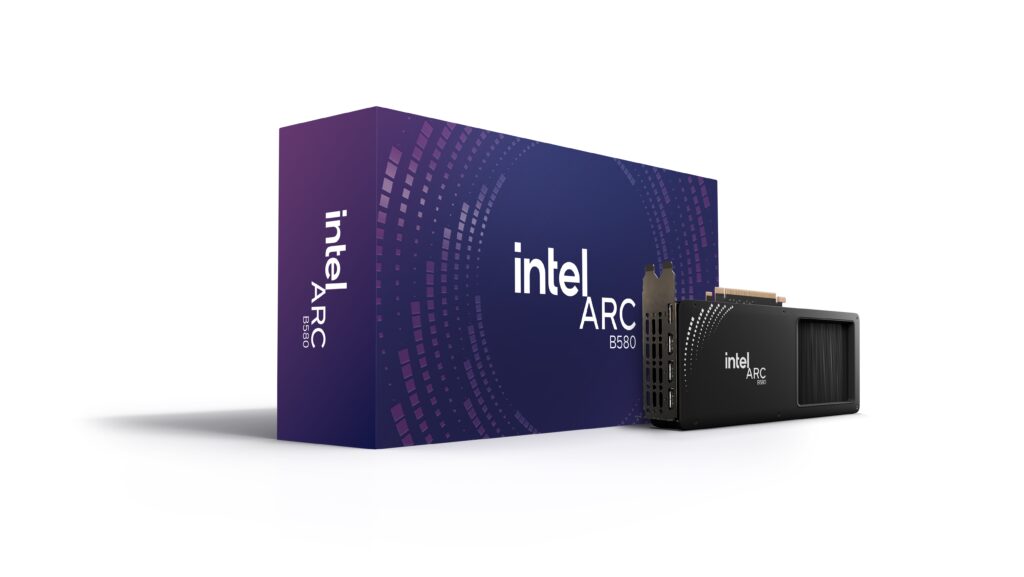As a December surprise, Intel launched its Battlemage GPU cards. Priced at a very affordable $249 and $219, these discrete graphics cards will make great gifts for the sweet spot of general-purpose gaming. Intel has struggled with discrete graphics for decades, going back to its first failed attempt at the beginning of the century, which was code-named Larrabee.
Then, Intel brought graphics cards to market again two years ago. They were well-priced, nice looking, and looked great in a windowed case, and worked reasonably well, but they weren’t quite good enough to truly challenge AMD or NVIDIA.
This latest release appears to be much more competitive both in performance and price, making them an interesting addition to the GPU market.
Intel’s Graphics Dominance
Intel has been dominant in integrated graphics for decades largely as a result of its historic microprocessor leadership. However, Intel has had a huge problem moving to higher-end graphics products. This became more problematic with the advent of AI, which tends to favor powerful GPU architectures over almost anything else.
This lack of GPU capabilities has reduced the company’s competitiveness in what has become a massive pivot to AI, allowing Intel management to better focus on a technology that has often seemed underfunded and under-executed within its ranks.
Intel’s second attempt at discrete graphics did make it to market but seemed to lack the funding and emphasis that was needed to assure success. While the parts were pretty good, they didn’t seem to pull much interest.
On paper (we haven’t received test cards yet), this latest release of Arc B580 performs up to 24% faster than the competitive NVIDIA RTX 4060 and the AMD RX 7600. Generally, differences below 20% aren’t noticeable by users, which is why this 24% advantage is important. The Intel Arc B580 is listed for $249, while the RTX 4060 typically sells for closer to $300, and AMD’s RX 7600 costs between $260 and $344, depending on vendor and configuration.
Assuming the initial benchmarks hold up in external testing, this should make Intel’s Battlemage GPUs very competitive and attractive to those on a budget (and this time of year, we are mostly all on tight budgets).
Intel also took a blended approach to its graphics cards that seemed to meld the best approaches from AMD and NVIDIA into something new and interesting. While being different often doesn’t pan out when done by a challenging vendor, Intel’s size and industry power should allow it to overcome this shortcoming if it markets these cards aggressively.
Branding
With the latest Jaguar brand screw-up, it is nice to see a company pick a brand that could help carry the product. Too often we focus on the actual product names from tech vendors, but letters and numbers are hardly memorable. Calling these cards Battlemage should make them easier to find when shopping online for them and it should help OEMs selling PCs with these cards in them to sell more as the name conveys a concept of power and gaming performance.
Apple demonstrated years ago that code names were far more attractive than letters and numbers when it came to designating products, but the industry just didn’t seem to get that. So, this branding effort showcases that the marketing folks at Intel get the need to have a name people can remember and ask for.
Wrapping Up
Intel gave the value gaming community an early Christmas present with performant gaming cards at attractive prices this year. While overcoming AMD and NVIDIA’s market dominance in this space will be difficult, Intel has created a very competitive offering that represents good value at a time when we are all looking for value.
Granted, Intel has a lot of distractions at the moment, but the team did an impressive job with these cards. With the right backing, Intel has the potential to begin to break out with this offering and eventually become a force in the discrete graphics market, which should also improve Intel’s AI potential going forward.
The company could use some good news this year, and this appears to be exactly that.



